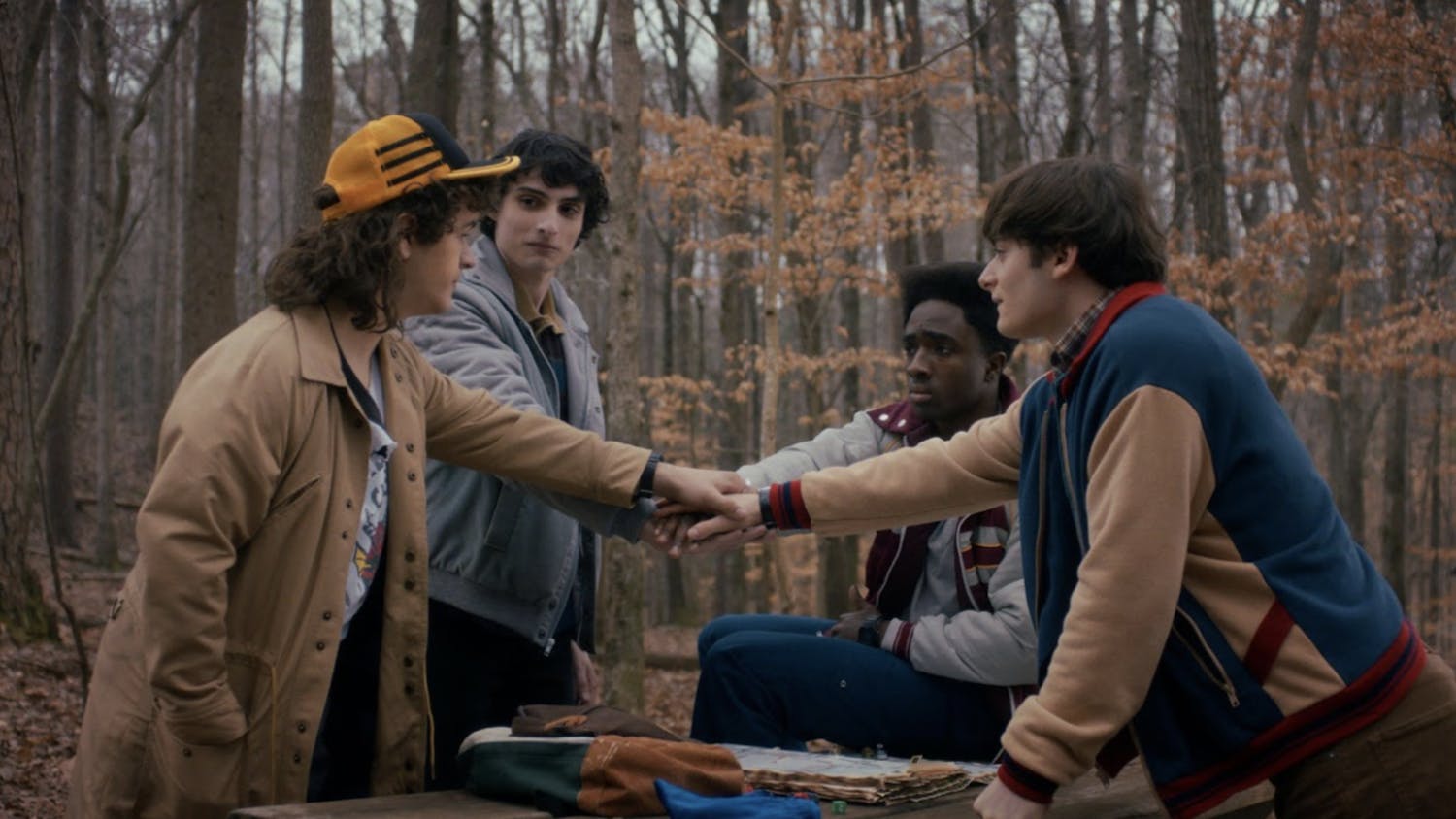By Nancy Bowne
Staff Writer
It’s the unthinkable that catches people’s attention. “How could someone do that?” And we’re already sucked in.
Despite my 8 a.m. Spanish class the next morning, I stayed up a bit later to watch “American Murder: The Family Next Door,” the recently released Netflix documentary that has been No. 1 on the “most watched” list, with my mom. The documentary is about a 2018 criminal case of Chris Watts, a Colorado man who murdered his pregnant wife as well as their two toddlers. While the documentary’s style was creatively appealing and captured the family’s story from the beginning, it was uncomfortable to witness their “normal life” and imagine the inner workings of his decisions and the triggers that led up to the murders. Perhaps that’s what made it so distressing and addictive to watch.

In the “spooky season” time of the year, more people cave into their love for crime thrillers, serial killers and horror movie biopics. But not every film is created equally within the same vein of consciousness. And when I say consciousness, I mean the actual characters.
You’ll have some antagonists who are nothing but a tall guy in a mask with an axe. Over the summer, I saw “The Rental” as my first drive-in movie. While it was a standard horror movie, I was a little frustrated that you never got to understand the landlord who killed the people at the rental house. He was just a tall, silent guy in a mask and holding an axe.
The same can be said about the original “Texas Chainsaw” and other modern horror movies, like “Halloween” and “Nightmare on Elm Street.” Do most of our fears stem from a place of no background? The real question is, do we even want to get to know the antagonist?
Some horror movies open a deeper inner dialogue of the character’s background and why they might be the way they are. Serial killer biopics and evil portrayed in the films “Silence of the Lambs,” “Harry Potter” and “Lord of the Rings,” have more of a spotlight on the deeper motivations of these antagonistic characters. Suburban middle-aged men, like Ted Bundy, and Jeffrey Dahmer, along with countless other crime shows represent a better conversation around mental health.
I can’t help but wonder if we often glamorize these figures with horrified awe. How much attention should we give them in our means of entertainment and adrenaline?
It is out of our wildest imaginations. We are equally disturbed and fascinated by these stories and can’t help but keep watching. Why did they do it? How could they carry through? It’s because we are suddenly faced with the dark side of human nature. Is it something genetic or acquired through a given environment?
By no means am I saying that this viewership normalizes or inspires homicide — but instead, it’s an interesting look on humanity’s craving for the absurdity of its limits. Maybe it’s the same with reality television and survival game shows. We’d never do it ourselves, but to watch is to view an alternate reality.
According to an article from Vice, some horror movies treat mental health conditions, such as schizophrenia, as an untreatable, paranormal condition that needs to be eliminated at all costs. “This does nothing to help us separate our own fear about the people who live with these diagnoses and how we respond and react to them.”
In some cases, serial killer biopics normalize mental health awareness and the necessity to address harmful environmental factors. To treat serial killers like stoic characters only damages our own perception of people and the true issues that need to be dealt with.
We’ve seen dramatic representations of mental health systems on the screen as well, including “Ratched,” “American Horror Story: Asylum” and “One Flew Over the Cuckoo's Nest.” While all on a varying level of reality, the history of mental health, psychological disorders and the lack of beneficial care it’s given could be its own horror film.
In the Halloween season, we can indulge in horror movies and crazy crime thrillers lightly, but it is still important to recognize their roots and consider humanity’s deeper psychology from these stories.
While every on-screen representation serves for some form of entertainment, there needs to be an authentic background context of the “bad guys.” Society so often pairs and splits people off according to good or bad, and in the deeper root of psychology, there is more to any character than just that.







